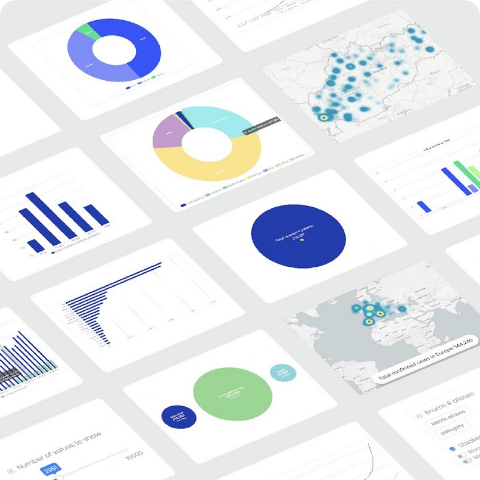Say you’ve collected a few sets of data to help your team make an important decision at work. You’ve done the research, collected the findings, and even managed to get some decent charts and graphs from it to present to your colleagues. But after the presentation you’re all wondering — what do all the numbers and points actually mean for taking actionable next steps?
Enter Data Stories, the platform that not only displays your data visually, but provides AI-generated context to your data.
So, how did this data visualization platform end up being one of Ataccama’s modules?

Tellstory — the prequel
If you’ve read our SpaceUP blog or follow our events, you’ve likely met our Chief Product and Technology Officer Martin Zahumensky. Before joining Ataccama, the Bratislava-based leader co-founded Instarea, a company primarily focused on data monetization, which ultimately created Tellstory (the precursor to what we know today as Data Stories).
A big part of the company was about collecting anonymized aggregate data, which was provided as a form of intelligence and additional information for other companies.
“After getting all this data, you need to put it in a form that actually makes sense to a user who may not be a data analyst,” Martin explained.
For example, if you’re given dashboards, usually you’ll ask more questions about the information you’re interested in, which could be used to make critical business decisions.
You may notice that one of your products is overperforming out of nowhere — How? And why? What can your business learn from this?
That’s where the data visualization and storytelling come into play.
“What we did differently is tell the story before users even ask, so they’re not looking at some tables they don’t understand, because they are not specialists in that area.”
As a triathlete, Martin said he explained the concept in terms of analyzing data from races–how many people are racing? Who are the fastest racers? Who are the slowest racers? What kind of times can a person achieve? Where is the best place to go to beat your personal record?
“When you take all that data and you create the dashboards, you see a chart, but it essentially won’t give you these answers to the questions you have. The idea of the story was to provide exactly this, that you are reading kind of like a news article, which actually tells you what’s important about it.”
The dynamic nature of the stories also gave users live updates, rather than one-off reports.
They began with a solution called Market Locator, which took an organization’s raw data, and processed it to an aggregated level. This was then visualized on maps and in charts.
“And we wanted to create something interactive which would convey information in a readable form, and tell the story behind it — which is where we got the name Tellstory from. This platform would always live on top of the data and pull out insights and describe the story behind the data. Then it actually gives a report to the people.”
One idea was to export these stories as videos of important information — like election results or developing populations — that could be posted on platforms like YouTube or Instagram for people to access more readily. They also considered creating a marketplace where these stories or analyses could be purchased.
After executing the initial stages and iterations of Tellstory and observing how the tool could evolve further, it was time to make some bigger moves.

Evolving into Data Stories
In 2020 Martin joined Ataccama. Soon after, Ataccama acquired Tellstory to expand its offering, and many members of the Tellstory team joined the company as well. One major reason for the decision was the compatibility with the platform, and how easily it integrated.
The existing Ataccama platform had some reporting capabilities, but these were missing for different use cases relating directly to the platform.
“At the same time we aimed to create a data catalog platform allowing users not only to find the data sources but to provide additional intelligence to people through more business-oriented insights and information. This would allow them to create such insights and stories within the platform and to share it with others in the company.”
Ultimately, Tellstory was a clear solution to the problem and provided the much needed reporting functionality.
The Tellstory team was already very similar to Ataccama’s — full of young, talented people. They initially started to create the product with a team who was partially university age. They delivered part of the tapestry, which was oriented toward AI.
After joining forces with Ataccama, Tellstory was renamed Data Stories. The majority of the team is located in Ataccama’s Bratislava office, but as Data Stories continued to grow, they gained members in Prague as well. When we restructured the Product and Engineering teams last year, Data Stories became one of our seven official Spaceports.

As a key part of Ataccama’s platform, Data Stories continues to grow and expects some exciting updates in the future. Check out our next blog, where we’ll take a closer look at how the Data Stories team operates, and where they’re heading next.
Want to join the Data Stories team? Check out our open positions, and keep an eye out for more exciting updates from the team!

